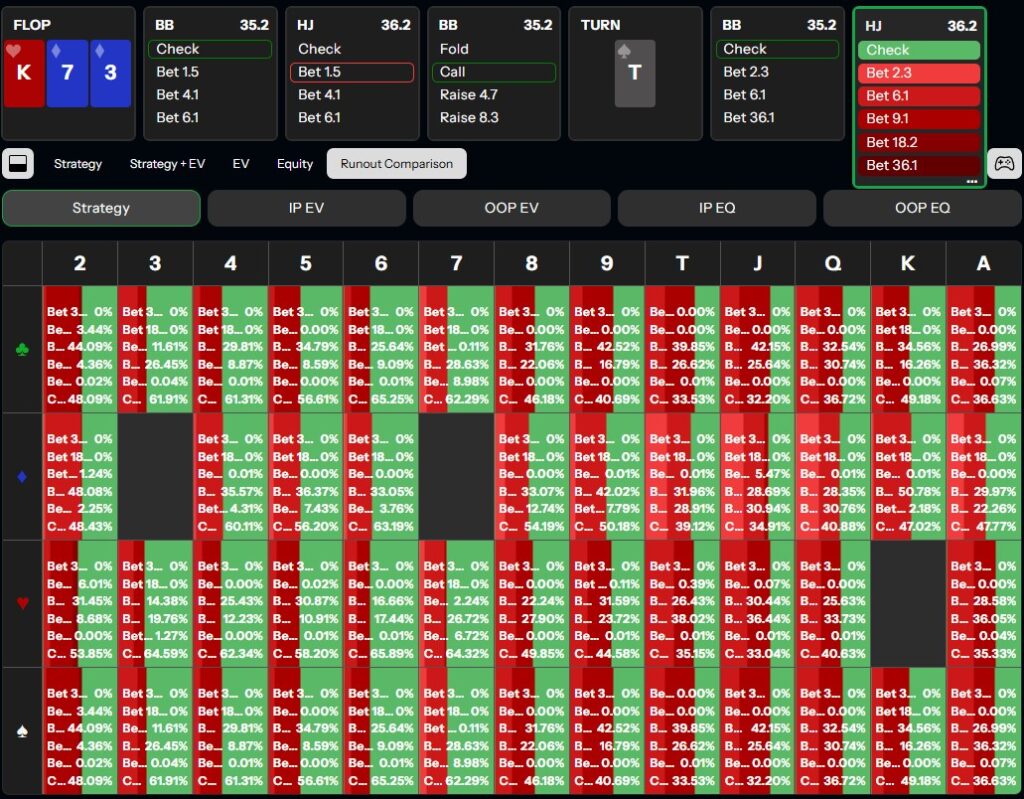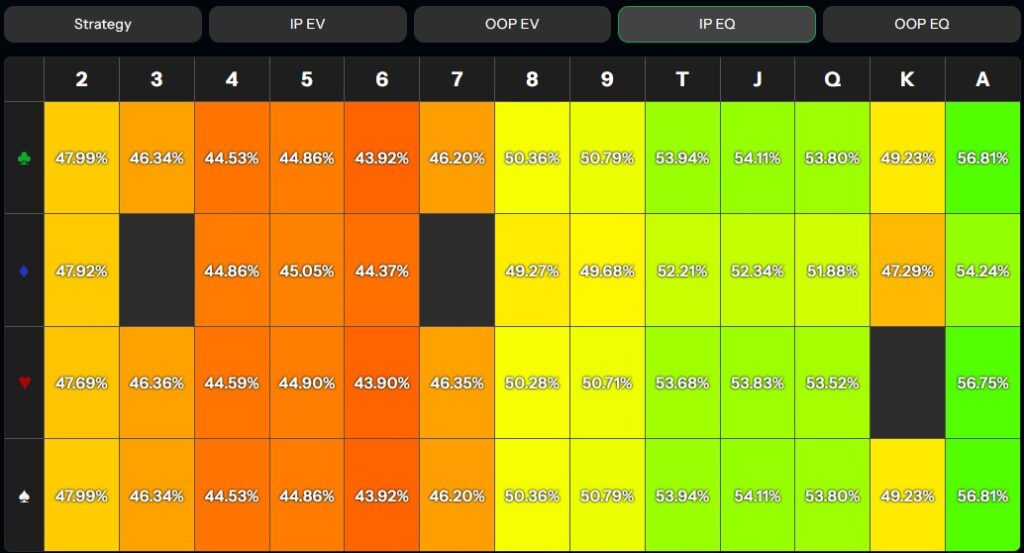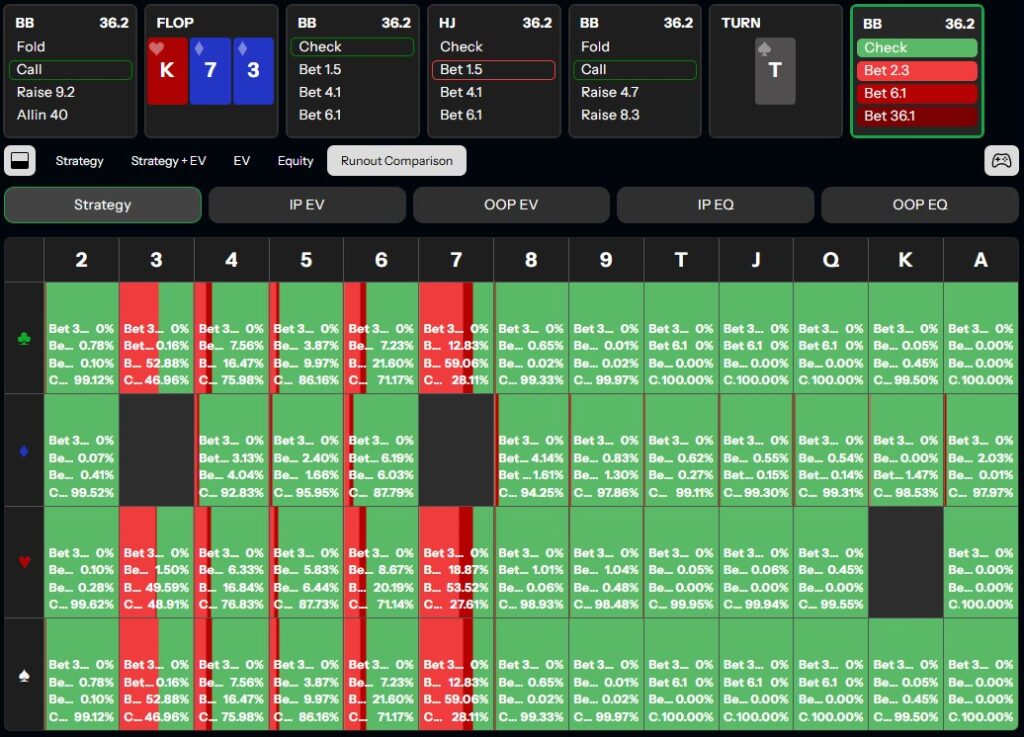We’re always looking for ways to help players deepen their understanding of Game Theory Optimal (GTO) strategy and sharpen their decision-making. Today, we’re thrilled to introduce a game-changing tool inside the PeakGTO library: Runout Comparison — a dynamic and intuitive way to study how strategies shift across every possible turn and river card.
Whether you’re grinding online cash games, preparing for high-stakes battles, or simply looking to refine your poker strategy, this feature is going to open your eyes to patterns and adjustments that were previously hard to spot.
What is Runout Comparison?
The Runout Comparison tool allows you to view your baseline strategy across every single possible turn or river card — all in one place. No more clicking through one card at a time. No more trying to piece together patterns in your head. With this feature, you can instantly identify how your betting frequencies, sizes, and equity shift based on each turn or river card.
This is an incredible way to recognize the deeper relationships between board texture and solver output — which cards are good for you, which ones favor your opponent, and how your strategy should adapt accordingly.
Why is it So Valuable?

When you’re studying GTO poker strategy, it’s one thing to memorize frequencies. It’s another to understand why those frequencies exist. Runout Comparison helps you visualize:
- Equity shifts on every turn and river.
- Where your betting becomes more polar or more condensed.
- How blockers, board pairs, and flush completions affect your strategy.
- When out-of-position (OOP) leads make sense and when you should be checking range.
For example, in a spot like Hijack vs. Big Blind on K73 two tone at 40bb, you’ll quickly see how your c-bet strategy on the flop transforms across different turn cards. The tool shows you that when the turn is a Ten, you’re betting big at a high frequency — but on low diamond cards like the 4♦, 5♦, or 6♦, your strategy shifts to more small bets or checks because your equity collapses.
You can even toggle between In Position Equity and Out of Position Equity to understand how the dynamic flips based on who holds the advantage after each card peels off.

See the Whole Picture — Instantly
One of the biggest challenges in solver study is context switching. Clicking into each turn or river card and trying to compare strategies is tedious and time-consuming. Runout Comparison eliminates that. You can immediately spot patterns like:
- When OOP players start leading on certain turns (for example, leading more frequently on low cards or board-pairing turns).
- How turn cards impact the sizing strategy of the in-position player.
- The impact of river cards on betting frequency — such as how a Jack river may drastically reduce your betting compared to a 9 of hearts.
These insights are priceless when you’re aiming to build intuition and apply GTO adjustments in real-time during your sessions.

Study Smarter, Not Harder
At its core, Runout Comparison is designed to help you study the relationship between board runouts and strategic adjustments in a structured, clear, and efficient way. Instead of memorizing spots in isolation, you’ll start to recognize global patterns in how board textures interact with ranges.
If you’re serious about improving at No Limit Texas Hold’em — especially in the fast-paced, high-skill environment of online 6-Max cash games — this feature will become one of your go-to study tools.
Ready to level up your GTO study sessions? Log in to PeakGTO today and start using Runout Comparison to unlock the hidden dynamics of the turn and river.





